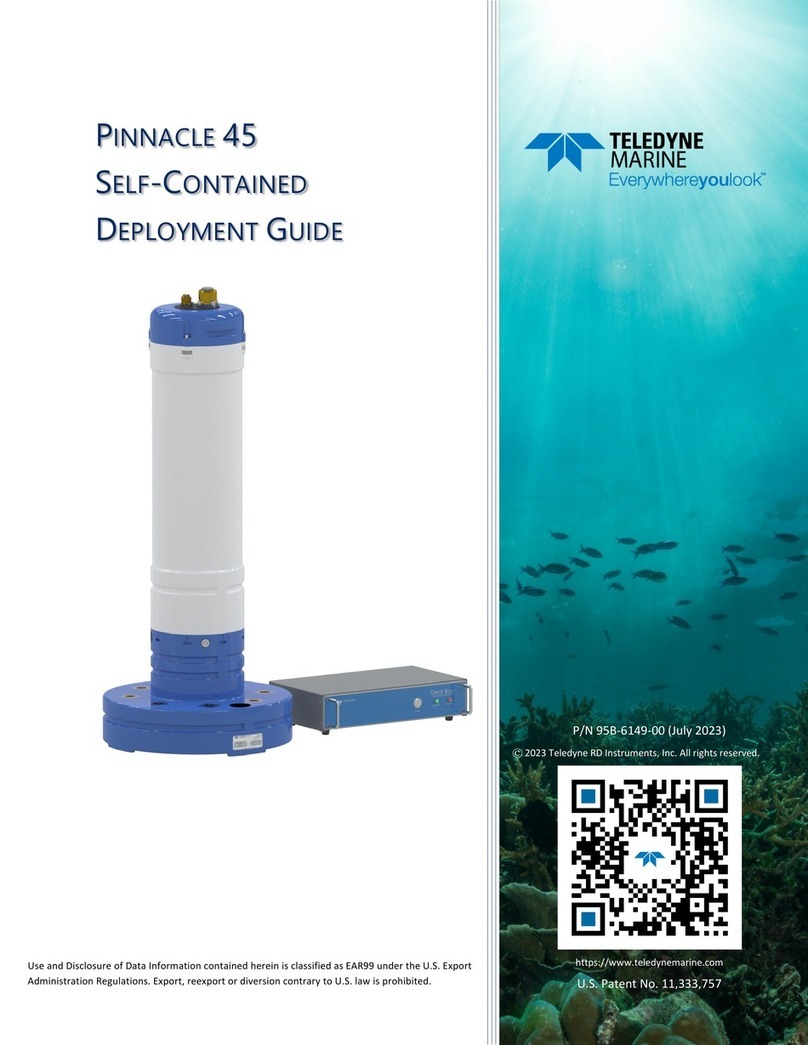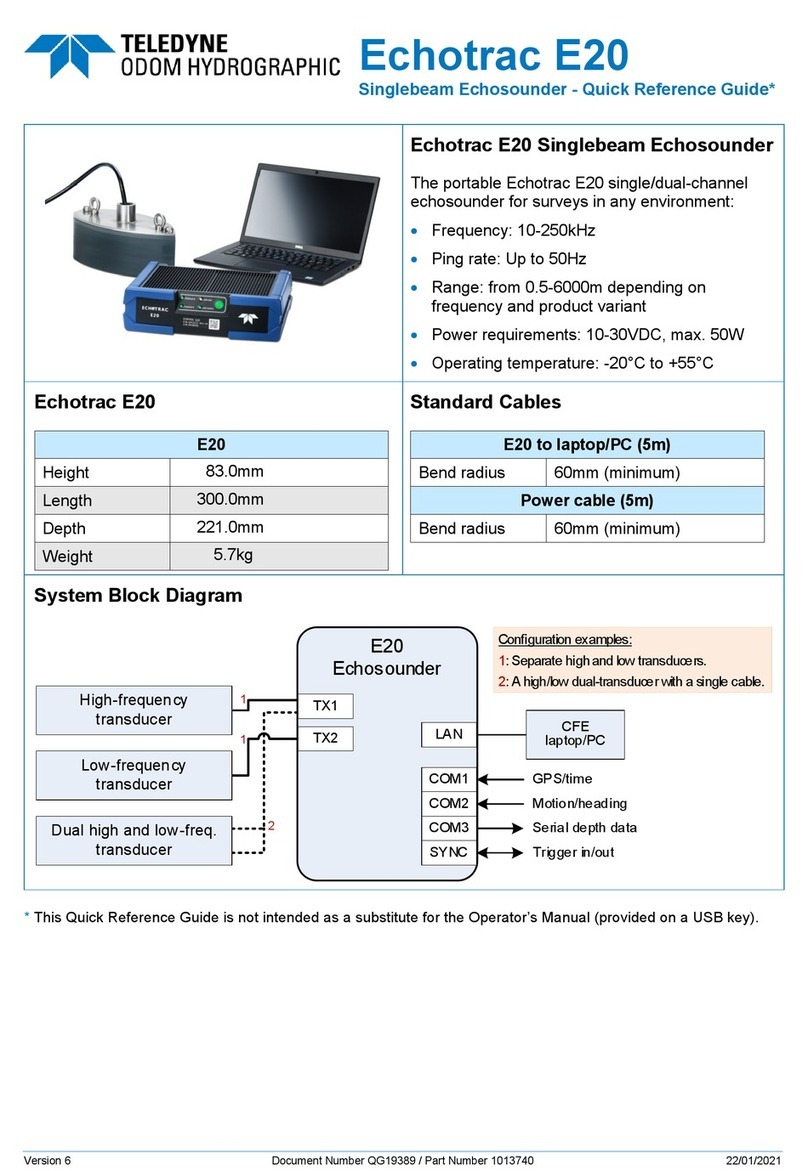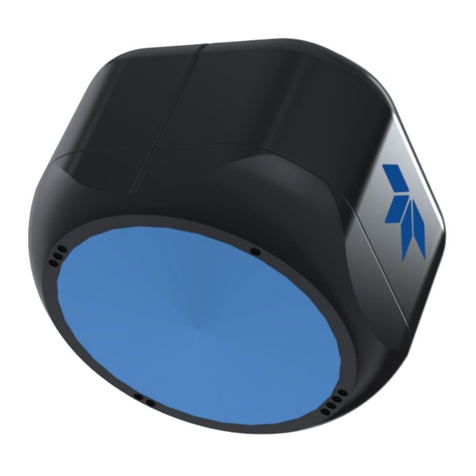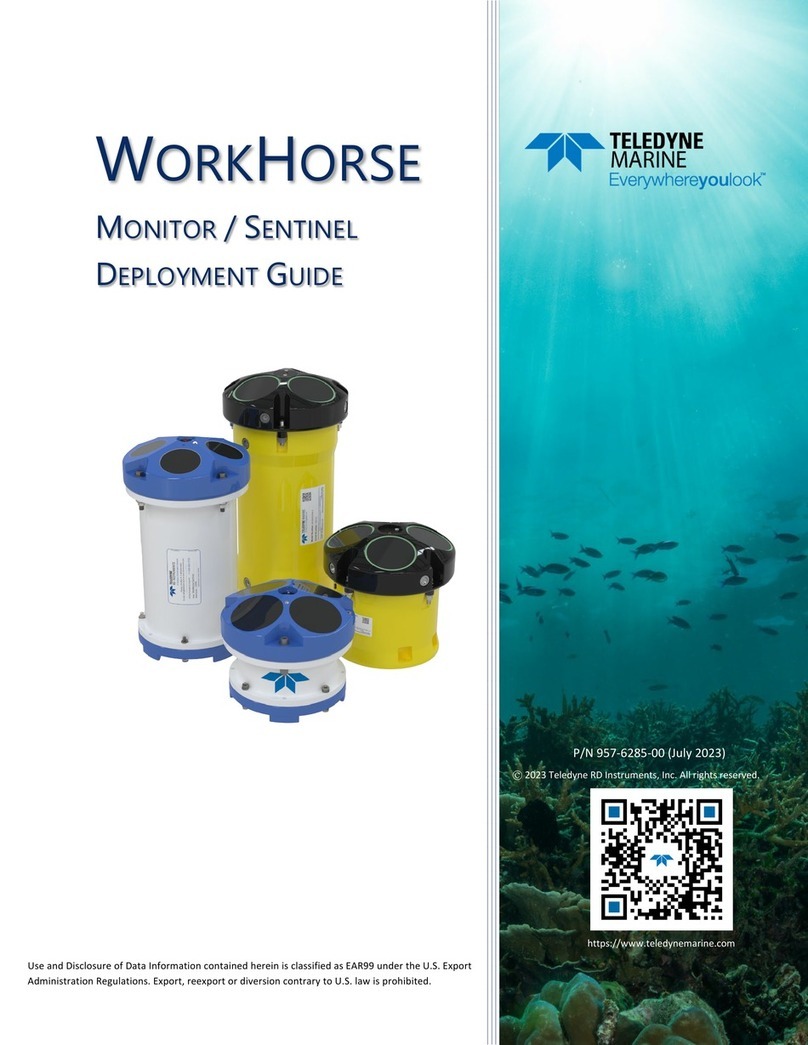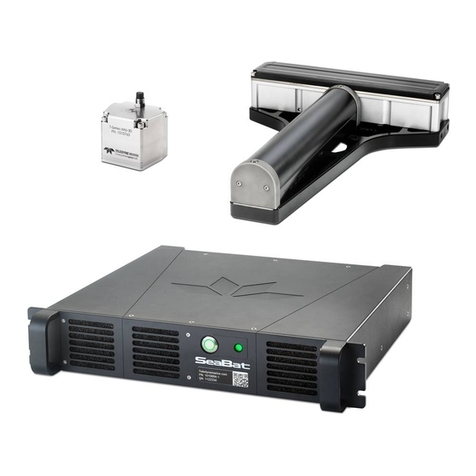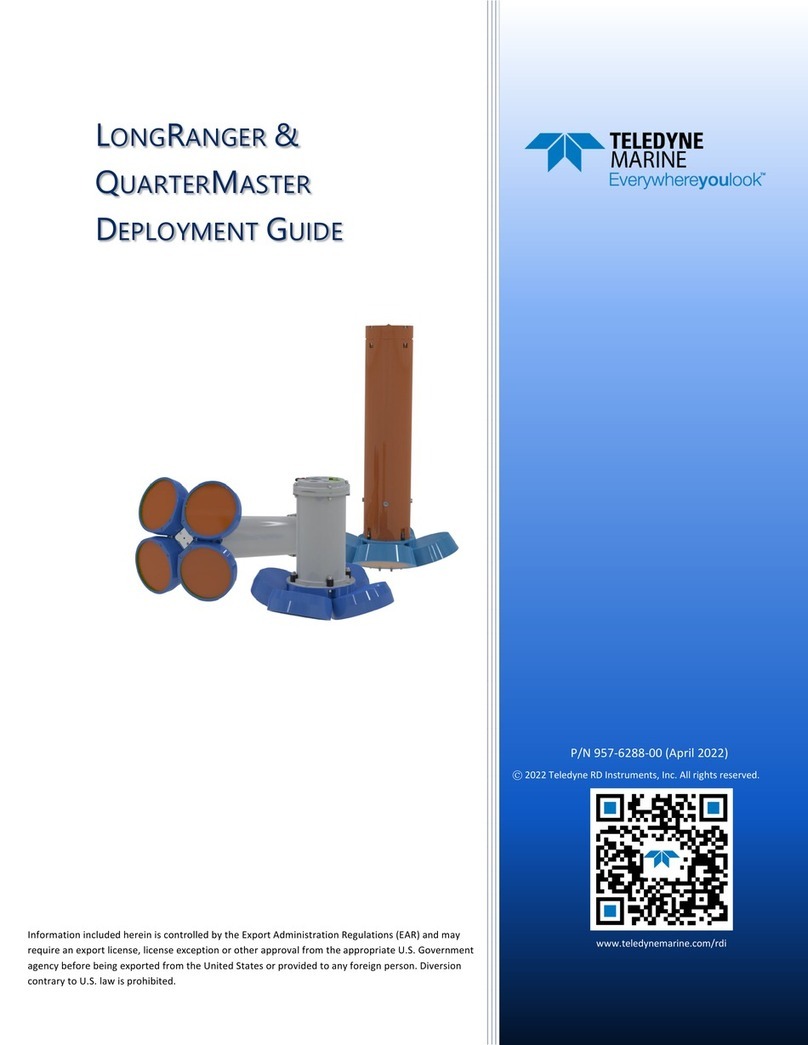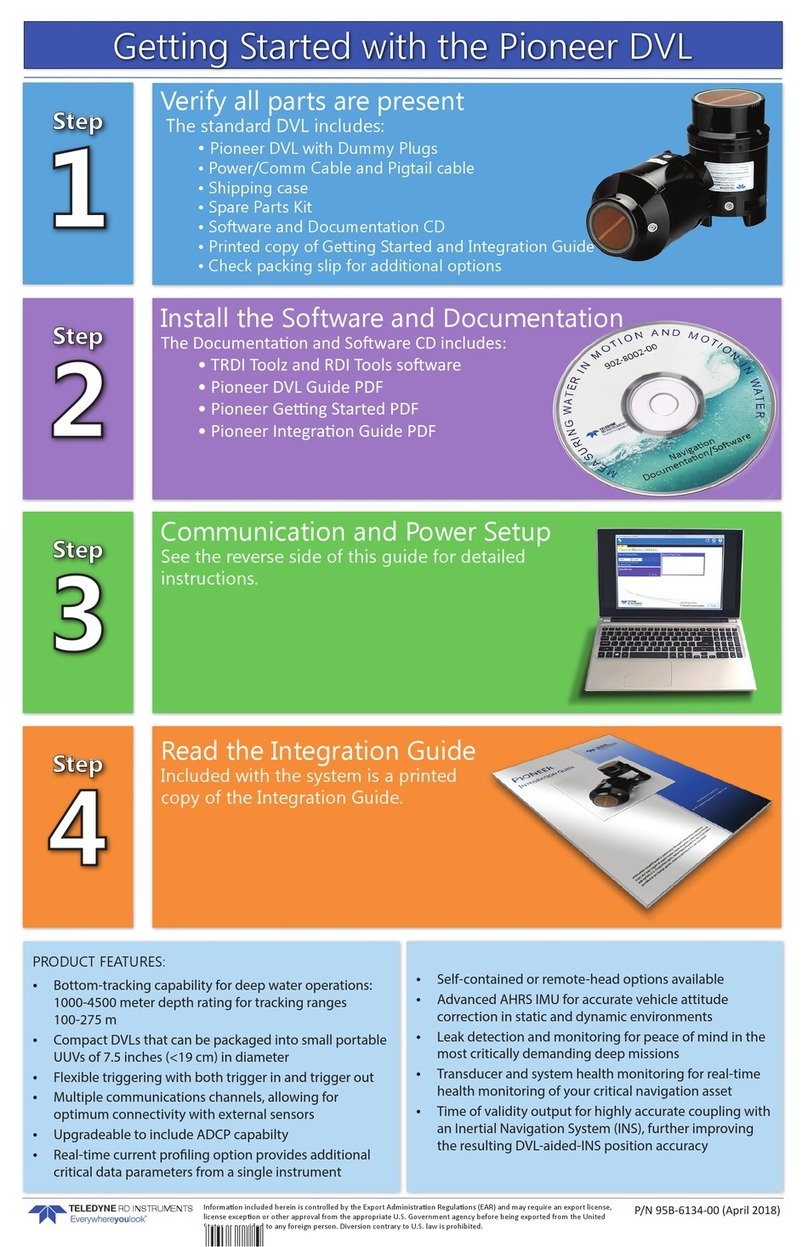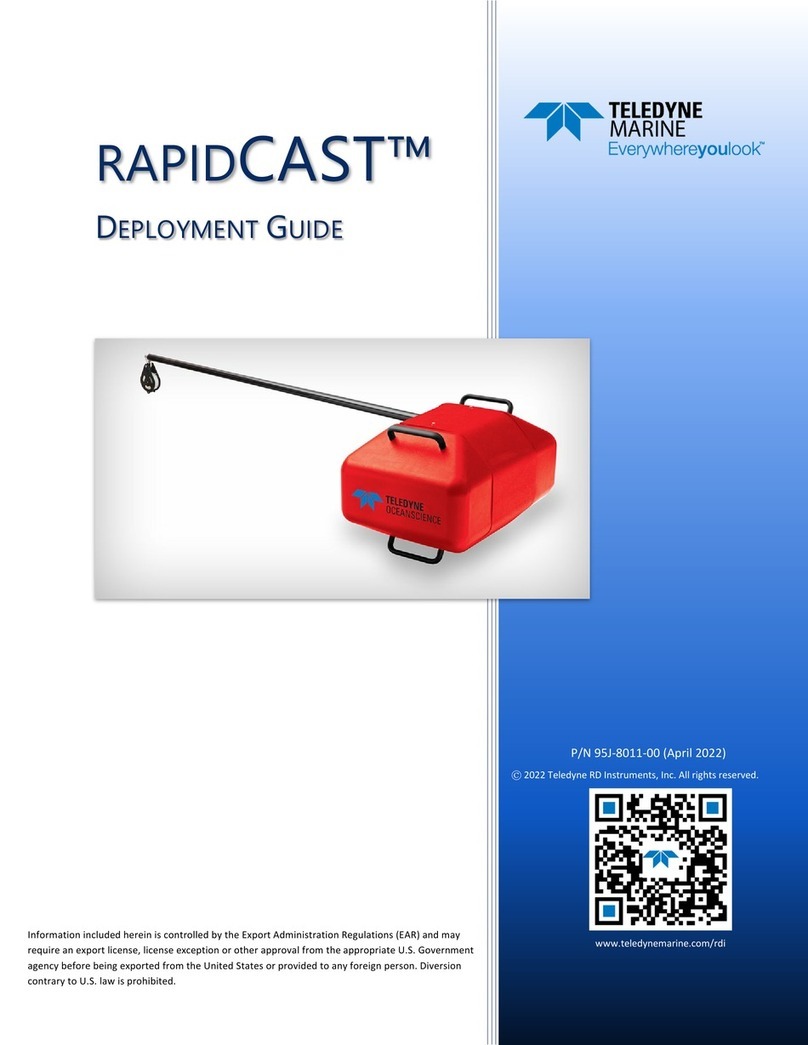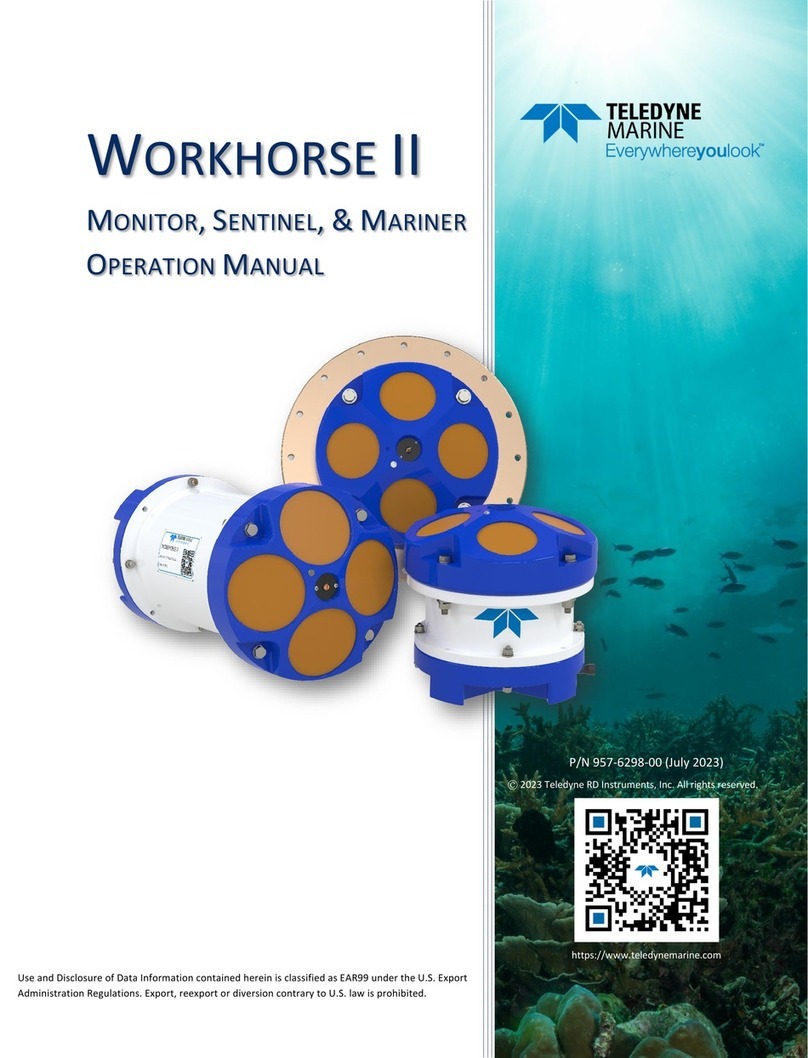
Tasman DVL Integration Guide P/N 95B-6156-00 (July 2023)
EAR-Controlled Technology Subject to Restrictions Contained on the Cover Page. Page 1
Getting Started with the Tasman
Identifying what’s in the Box
Tasman Inventory
TAS300V-xx-xxxxx
TAS600H-xx-xxxxx
Tasman 6000-meter DVL
The Tasman 300 and 600 kHz systems includes the transducer and connector
(Horizontal or Vertical configuration) with protective cap. When unpacking, use
care to prevent physical damage to the transducer face and connector. Use a soft
pad to protect the transducer.
Shipping case with foam inserts.
73B-6085-003 Power/Comm Pigtail Cable
The DVL Power/Comm pigtail 3-meter cable allows you to build custom cable to
connect the Tasman to your vehicle/platform. It provides all the leads for serial
and Ethernet COM, Power, and Trigger.
95B-6155-00
95Z-6007-00 (part
of 75BK6107-00)
Tasman Getting Started Guide A printed quick start card showing test setup is included.
Download instructions This sheet has instructions for downloading the software and manuals.
Download from
website
TRDI Toolz
TRDI Toolz is a utility and testing software package that can be used to test the
DVL.
NavUI
The Navigation User Interface (NavUI) is designed to setup Tasman systems with a
focus on ease of use and accessibility.
Spare Parts See table below for description Includes spare closing hardware, spare anodes, and lubricant for the connector.
See the packing slip for additional options. If you are missing parts, contact TRDI support
rdifs@teledyne.com or call +1 (858) 842-2700.
Tasman Spare Parts 75BK6134-00
Description Quantity Part number Where used
Anode, housing 2 81B-4216-00
Anodes for Housing Exterior
Anode Screw 2 M5X0.8X10FH
Hex Key, 3mm, Ball End 197Z-6176-00 Field replaceable transducer
Hex Key, 4mm, Long Arm 1 6958A14
Mounting hardware for transducer
Washer, Isolating Sleeve, M5 Screw, Nylon 8 97Z-6175-00
Washer, Flat, 10MM OD, SST 16 M5WASHSTD
Locknut, HEX, SST 8 M5X0.8LOCKNUT
Screw, SKT HD, SST 8 M5X0.8X40SH
Plate, Isolator, Tasman 1 81B-6118-00
Silicone Lubricant, 4-pack 1 5020 Power/Comm connector (rubber portion only) and Field
Replaceable Transducer 9-pin connector
Tool Bag, Canvas 1 84Z-6000-00 Spare parts are located inside bag

